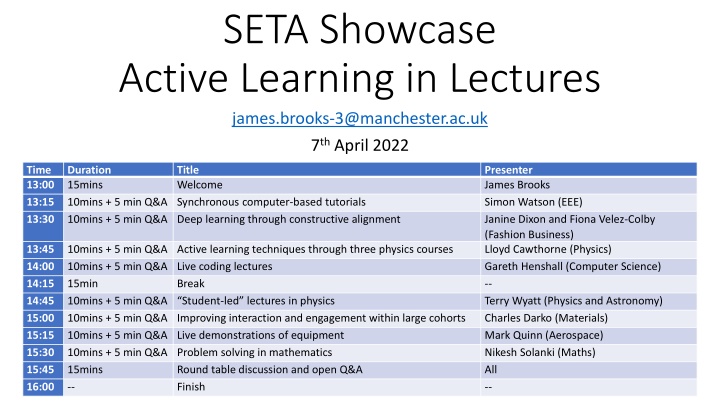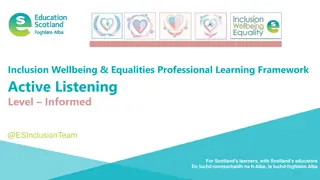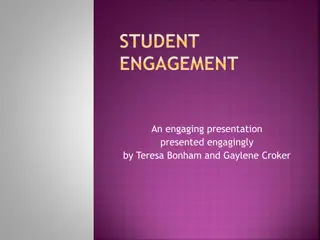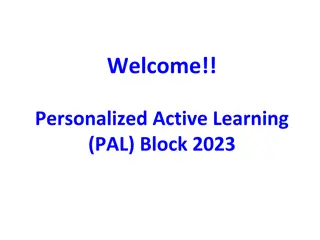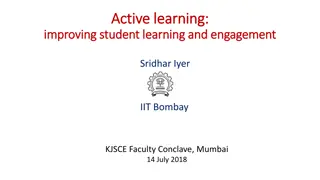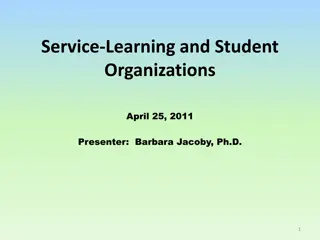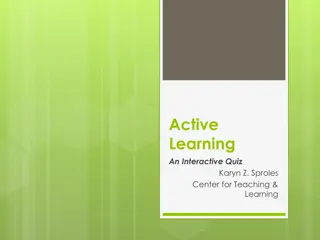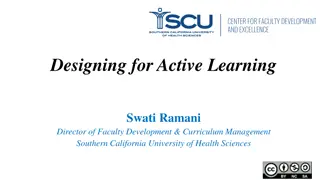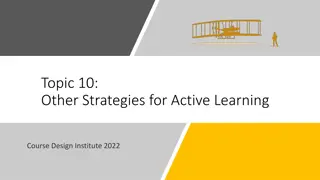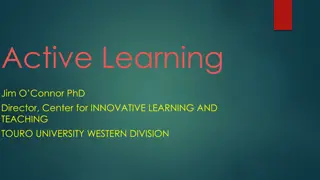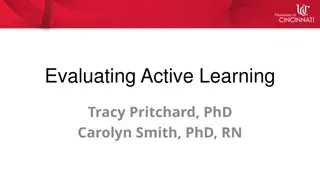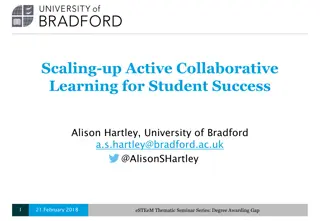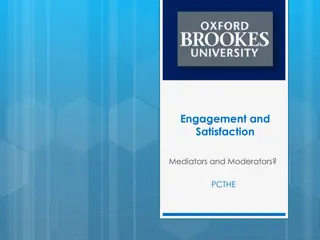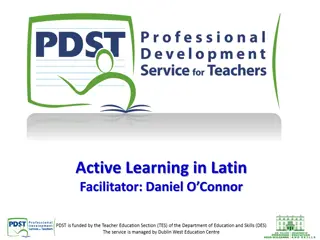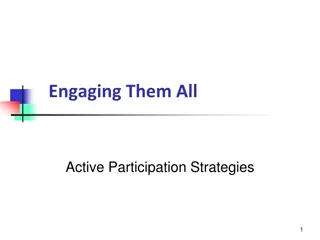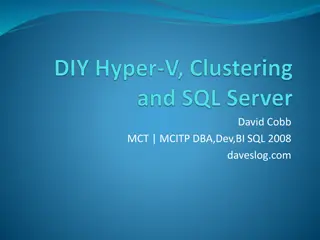Active Learning Strategies for Student Engagement
Implement active learning techniques in lectures to enhance student performance and attitudes towards courses in science, engineering, and mathematics. Explore various instructional activities involving students in doing and thinking, leading to improved interaction and engagement within large cohorts. Discover how active learning increases student performance and fosters positive attitudes towards the course with real-world examples and meta-analysis data.
Download Presentation

Please find below an Image/Link to download the presentation.
The content on the website is provided AS IS for your information and personal use only. It may not be sold, licensed, or shared on other websites without obtaining consent from the author.If you encounter any issues during the download, it is possible that the publisher has removed the file from their server.
You are allowed to download the files provided on this website for personal or commercial use, subject to the condition that they are used lawfully. All files are the property of their respective owners.
The content on the website is provided AS IS for your information and personal use only. It may not be sold, licensed, or shared on other websites without obtaining consent from the author.
E N D
Presentation Transcript
SETA Showcase Active Learning in Lectures james.brooks-3@manchester.ac.uk 7thApril 2022 Time 13:00 13:15 13:30 Duration 15mins 10mins + 5 min Q&A Synchronous computer-based tutorials 10mins + 5 min Q&A Deep learning through constructive alignment Title Welcome Presenter James Brooks Simon Watson (EEE) Janine Dixon and Fiona Velez-Colby (Fashion Business) Lloyd Cawthorne (Physics) Gareth Henshall (Computer Science) -- Terry Wyatt (Physics and Astronomy) Charles Darko (Materials) Mark Quinn (Aerospace) Nikesh Solanki (Maths) All -- 13:45 14:00 14:15 14:45 15:00 15:15 15:30 15:45 16:00 10mins + 5 min Q&A Active learning techniques through three physics courses 10mins + 5 min Q&A Live coding lectures 15min Break 10mins + 5 min Q&A Student-led lectures in physics 10mins + 5 min Q&A Improving interaction and engagement within large cohorts 10mins + 5 min Q&A Live demonstrations of equipment 10mins + 5 min Q&A Problem solving in mathematics 15mins Round table discussion and open Q&A -- Finish
instructional activities involving students in doing things and thinking about what they are doing Bonwell and Eison (1991) Active Learning: Creating Excitement in the Classroom AEHE-ERIC Higher Education
Active learning increases student performance in science, engineering, and mathematics Meta analysis of 225 studies Student performance on examinations and concept inventories increased by 0.47 SD Students in classes with traditional lecturing were 1.5 times more likely to fail than those with active learning https://math.stanford.edu/~conrad/papers/PNAS.pdf
Active learning promotes a more positive attitudes towards the course [in schools] Meta-analysis of 144 studies Overall effect size for the effectiveness of active learning on attitudes towards the course (g = 0.757). properly implemented student- centred teaching will lead to more positive attitudes towars the course https://bera-journals.onlinelibrary.wiley.com/doi/epdf/10.1002/rev3.3346
The Engagement Grid Clark, Ruth C., and Richard E. Mayer. E-learning and the science of instruction. John Wiley & Sons, 2016.
Visible Learning Visible Learning Clark, Ruth C., and Richard E. Mayer. E-learning and the science of instruction. John Wiley & Sons, 2016.
Further Reading Cynthia Brame. Active Learning. Vanderbilt Freeman, Scott, et al. "Active learning increases student performance in science, engineering, and mathematics." Proceedings of the national academy of sciences 111.23 (2014): 8410-8415. Ambrose, Susan A., et al. How learning works: Seven research-based principles for smart teaching. John Wiley & Sons, 2010.
